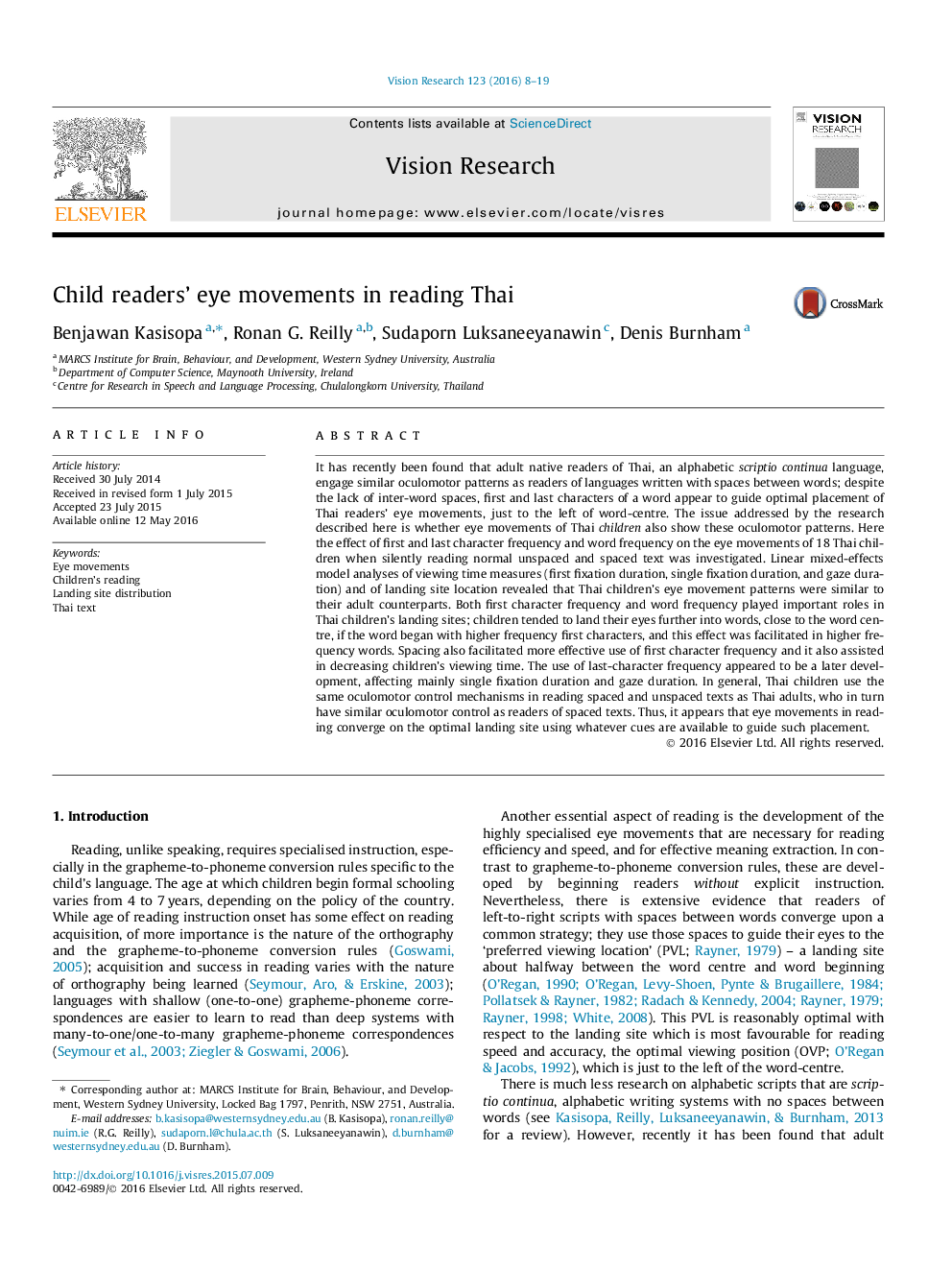| Article ID | Journal | Published Year | Pages | File Type |
|---|---|---|---|---|
| 6203013 | Vision Research | 2016 | 12 Pages |
â¢Thai children's oculomotor control is similar to those of adults.â¢Children's preferred viewing location is also at word-centre.â¢Boundary characters are used as visual cues.
It has recently been found that adult native readers of Thai, an alphabetic scriptio continua language, engage similar oculomotor patterns as readers of languages written with spaces between words; despite the lack of inter-word spaces, first and last characters of a word appear to guide optimal placement of Thai readers' eye movements, just to the left of word-centre. The issue addressed by the research described here is whether eye movements of Thai children also show these oculomotor patterns. Here the effect of first and last character frequency and word frequency on the eye movements of 18 Thai children when silently reading normal unspaced and spaced text was investigated. Linear mixed-effects model analyses of viewing time measures (first fixation duration, single fixation duration, and gaze duration) and of landing site location revealed that Thai children's eye movement patterns were similar to their adult counterparts. Both first character frequency and word frequency played important roles in Thai children's landing sites; children tended to land their eyes further into words, close to the word centre, if the word began with higher frequency first characters, and this effect was facilitated in higher frequency words. Spacing also facilitated more effective use of first character frequency and it also assisted in decreasing children's viewing time. The use of last-character frequency appeared to be a later development, affecting mainly single fixation duration and gaze duration. In general, Thai children use the same oculomotor control mechanisms in reading spaced and unspaced texts as Thai adults, who in turn have similar oculomotor control as readers of spaced texts. Thus, it appears that eye movements in reading converge on the optimal landing site using whatever cues are available to guide such placement.
